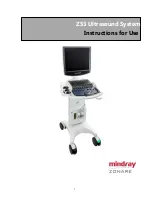
22
10. Setting, Testing and Adjustments
Equipment
Air testing is the usual method of testing and
setting pressure relief valves; however, valves
should be set and tested using the approved
media according to applicable codes and
standards. A pressure source supplies air to a test
drum usually 1-1/2 cubic feet internal volume.
The air pressure to the test drum is controlled by a
quick opening valve (approximately 1 inch). The
valve being tested is mounted directly on the test
drum without restrictions. If considerable
numbers·of valves are tested, it is advisable to
provide an air receiver between the compressor
and the quick opening valve. This arrangement
allows a small-volume high-pressure compressor to store
air during off-hours.
Adjustments & Performance
The use of the correct spring is a matter of critical importance. Attempting
to employ a spring below its rated pressure range may result in a loss of lift
with resulting loss of capacity and a generally sluggish valve action. Using a
spring above or below its rated temperature range may cause a change in
spring characteristics and possibly failure of the spring itself. Before
changing the set pressure of any valve verify that the new pressure is
within the range of the spring and valve construction. When raising the set
pressure, check the applicable design code and the design pressure of the
protected equipment to ensure compliance with equipment design and
local requirements. Before reducing the set pressure, make certain that the
capacity at the reduced pressure is sufficient for the protection of your
equipment. Valves which are properly installed on steam, gas, or vapor
services will relieve with a pronounced pop when opening. After the excess
pressure has been relieved, the valve will generally reseat at approximately
5% to 7% below the set pressure. Actual blowdown will vary with each
valve and installation. There is generally no distinct pop with liquid service
relief valves as the opening will generally be proportional to the rise in
pressure. It is important for blowdown rings to be adjusted carefully and
accurately in accordance with the table values.
Procedure
To properly test a valve, the test drum
pressure is brought up to about 90% of the set
pressure of the valve. The quick opening valve
is now opened sufficiently to cause the test
drum pressure to continue to increase
2 psi/sec until the valve pops. A test gauge
connected to the test drum in a static pressure
zone will indicate the pressure the valve pops.
Further spring setting adjustments may be
necessary to achieve the desired set pressure
of the valve. The tightness of a pressure relief
valve on gas or vapor service is closely
connected with the operation of the valve i.e.
unless a valve opens and closes sharply, it
may leak. The action of such a valve depends upon the expansive and
reactive forces of the flowing medium (gas or vapor only) which in turn
depends upon the location of the blowdown ring. Since the capacity of the
test stand is considerably less than the actual valve capacity, it is essential
that the blowdown ring be adjusted for good test stand operation. The
lowest ring position that can be tolerated for a given size test drum
depends upon the valve size and its set pressure relative to the test drum
size. Raising the nozzle ring to within two notches from touching the disc
holder will obtain the maximum reaction from the smallest amount of the
test fluid. However, this position may produce excessive impact and seat
damage to small valves set at high pressures. Using a test gag while
testing valves can reduce the damage to the seating surfaces.
Adjusting Valve to Required Set Pressure
After the valve has been reconditioned and reassembled minus the cap
and/or lever assembly, it is ready for a final spring adjustment to the
required set pressure. If a new set pressure is required, the limits for
adjustment of the spring must be observed. It may be necessary to provide
a different spring. After the jam nut is tightened, the valve should be
popped at least once more to prove the accuracy of the setting.
Air Test Stand Settings
For spring adjustment or checking set point on air test stands, raise the ring
to a position 2 notches down from contact with the disc holder. Return ring
to tabulated field setting or setting established through in-place testing
before installation. Be sure to include temperature compensation of set
pressure where applicable.
Setting, testing &
adjustment of PRVs should
be performed in accordance
with all applicable codes
and standards.
ASME
Code
SAFETY
INSTRUCTIONS
Testing equipment should
follow a regular prevetative
maintenance schedule. All
testing should be performed
within the range of the
equipment to avoid serious
injury or death.
Air Testing Equip.
Main. Schedule
DANGER
Содержание 2600 Series
Страница 1: ...0713T R0 Series 2600 Maintenance Manual ...
Страница 47: ...47 Notes ...
















































